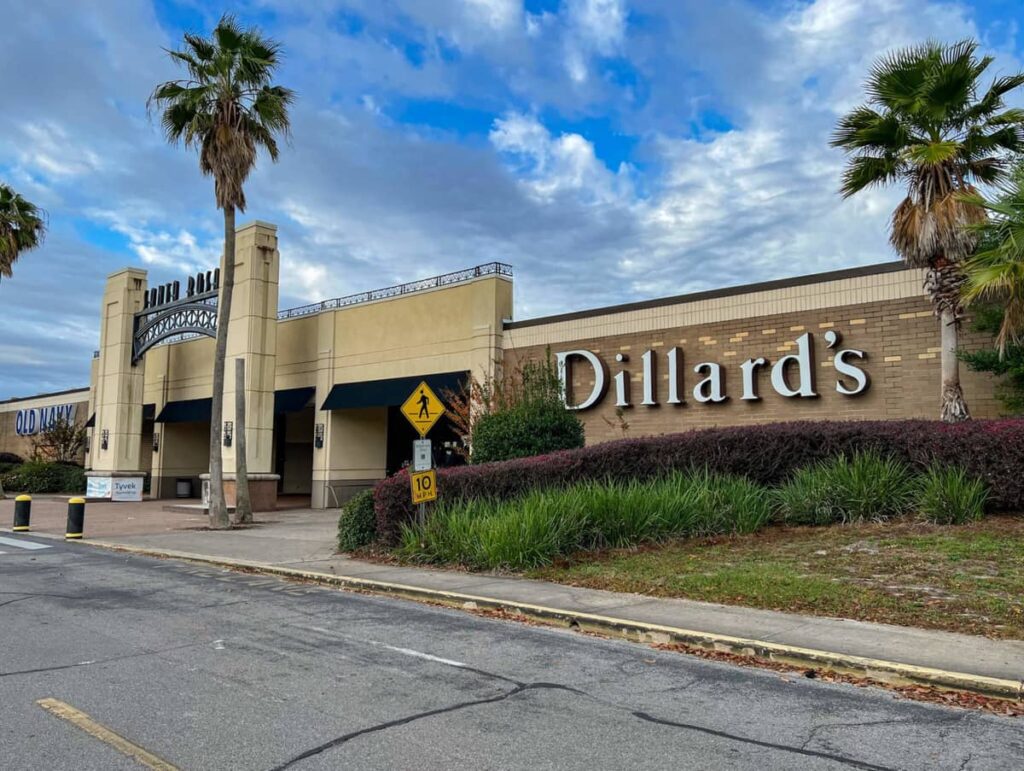Dillard's Closing: What Does It Mean For Shoppers?
The recent news surrounding Dillard's closing has left many shoppers and employees alike in a state of uncertainty. As one of the prominent department stores in the United States, Dillard’s has been a staple for fashion, home goods, and much more. The news of its closing has sparked conversations about the future of retail and the impact on local economies. As the retail landscape continues to evolve, understanding the implications of Dillard's closing is crucial for consumers and industry professionals alike.
As the world shifts towards online shopping, traditional retailers like Dillard's have felt the pressure. Closing a store can signify various factors, including declining sales, increased competition, and changing consumer preferences. This article will delve into the reasons behind this significant event, the potential impacts on the community, and what it could mean for the future of shopping. With Dillard's closing, the retail industry may be at a pivotal moment, and understanding these dynamics can help us navigate the changes ahead.
Moreover, Dillard's closing raises essential questions about the future of retail as we know it. Will other department stores follow suit? How will this affect the shopping experience for consumers? In this article, we will explore these questions and more, providing insights into the broader implications of Dillard's decision to close its doors. As we unpack this topic, it is crucial to consider the personal stories and experiences of those affected by the store's closing, offering a human perspective on this significant development.
- Exploring The Intriguing Debra Jo Rupp Relationship
- Jude Bellingham A Closer Look At His Mixed Race Heritage
What Led to Dillard's Closing?
The reasons behind Dillard's closing can be traced to several interconnected factors. One primary reason is the rise of e-commerce, which has transformed how consumers shop. Many shoppers now prefer the convenience of online purchasing over traditional department store experiences. This trend has led to declining foot traffic in stores, ultimately impacting sales and profitability.
Another contributing factor is the shift in consumer preferences towards fast fashion and discount retailers. With brands like Zara, H&M, and TJ Maxx gaining popularity, traditional department stores like Dillard's have struggled to keep up with the changing market dynamics. Additionally, economic challenges such as inflation and changing demographics have played a role in the decline of sales at Dillard's.
How Many Stores is Dillard's Closing?
The exact number of stores Dillard's is closing has not been officially disclosed. However, industry estimates suggest that the company may be reducing its footprint significantly in various regions. The closures may primarily affect locations that have underperformed or are in highly competitive markets. This strategic move is part of a broader effort to streamline operations and focus on more profitable locations.
- Lukashenko Age The Life And Times Of Alexander Lukashenko
- Nicollette Sheridan A Journey Through Love And Relationships
What Does Dillard's Closing Mean for Employees?
Dillard's closing will undoubtedly impact employees, many of whom have devoted years to the company. Job losses can create significant challenges for those affected, leading to financial instability and emotional distress. The store's management has expressed its commitment to supporting employees through this transition, including offering severance packages and job placement assistance where possible. Nevertheless, the reality is that losing a job can be a traumatic experience, and many employees may struggle to find new opportunities in the evolving retail landscape.
What Impact Will Dillard's Closing Have on Local Communities?
The closing of Dillard's will have a ripple effect on local communities, particularly in areas where the store has been a significant retail presence. Local businesses that rely on foot traffic generated by Dillard's may experience declines in sales, leading to further economic challenges. Additionally, the loss of a major employer can impact the community's overall economic health and stability.
Moreover, the closing of Dillard's may alter the shopping landscape in the affected areas, leading to fewer options for consumers. This change could force shoppers to travel further for their retail needs, further straining local economies and reducing community engagement.
Can Dillard's Survive in the Evolving Retail Environment?
As Dillard's navigates the challenges posed by its closing, many wonder whether the brand can survive and thrive in an increasingly digital world. The key to survival lies in adapting to changing consumer preferences and investing in innovative strategies. These may include enhancing the online shopping experience, diversifying product offerings, and improving customer service.
Moreover, Dillard's must focus on strengthening its brand identity and connecting with its target audience. By understanding the needs and desires of consumers, Dillard's can position itself to compete effectively in the retail market, even in the face of closures.
What Are the Alternatives for Shoppers After Dillard's Closing?
For shoppers who relied on Dillard's for their shopping needs, the closing presents a challenge. However, several alternatives are available to consumers seeking similar products and experiences. These alternatives include:
- Online Retailers: Websites like Amazon, Macy's, and Nordstrom offer a wide selection of products that shoppers can conveniently browse and purchase from home.
- Local Boutiques: Supporting local boutiques can provide unique shopping experiences while helping to strengthen the community.
- Outlet Stores: Discount retailers and outlet stores can offer similar brands at lower prices, making them appealing alternatives to department stores.
- Thrift Stores: Shopping at thrift stores can yield unique finds and support sustainability while providing an affordable option.
What Does the Future Hold for Dillard's?
The future of Dillard's remains uncertain as the company navigates the complexities of the retail landscape. While the closing of certain stores may be a strategic move to streamline operations, it also highlights the need for the brand to adapt to changing consumer behaviors. With a focus on innovation and customer experience, Dillard's may still have the potential to thrive in the retail market.
Ultimately, Dillard's closing serves as a reminder of the evolving nature of retail and the necessity for brands to remain agile in the face of change. As consumers increasingly turn to online shopping, traditional retailers must find ways to engage and retain their customer base. The road ahead may be challenging, but with the right strategies and adaptations, Dillard's can emerge stronger and more relevant in the future.
- Unraveling The Love Life Of Cailee Spaeny Who Dated Who
- Unveiling The Mystery Who Is Scott Mcgillivray Married To

Belk’s / Dillard’s, Columbia Mall late 2008 at Columbia Closings

Belk’s / Dillard’s, Columbia Mall late 2008 at Columbia Closings

Dillard's Holiday Hours Open/close near my location